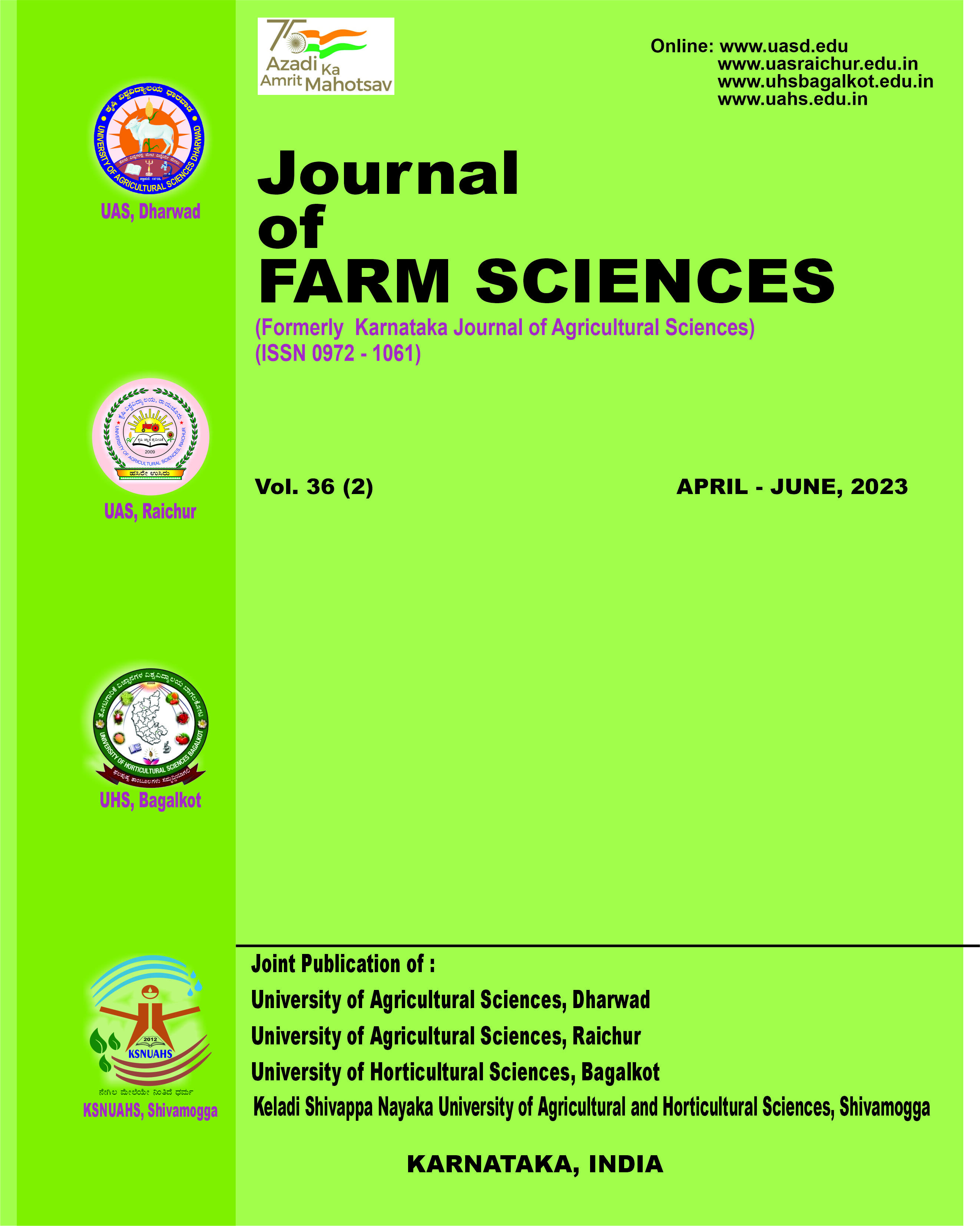Trait dynamics through association and path analysis across temperature regimes in chickpea (Cicer arietinum L.)
Abstract
Chickpea (Cicer arietinum L.) is an important food legume, grown across more than fifty countries in the world. There has been constant improvement on the yield levels of the crop, however, its yield potential is constrained by several stresses including heat, particularly during flowering and pod development. This study aimed to assess the trait dynamics through character associations along with direct and indirect effects of independent traits on yield under timely sown and late sown conditions. Forty genotypes were evaluated under two sowing regimes viz., timely sown (October) and late sown (January). Under timely sown condition, seed yield per plant had significantly positive correlation with number of pods per plant (0.734), plant biomass (0.684), total chlorophyll content (0.737), pollen viability (0.402) and canopy temperature depression (0.578). Path coefficient analysis indicated that plant biomass (0.2840) and number of pods per plant had the higher direct contributions to seed yield per plant. On the other hand, negative correlations were noted with days to maturity (-0.238) and plant height (-0.422). In the late sown condition, seed yield per plant showed significant positive correlation with pollen viability (0.686), number of pods per plant (0.757), canopy temperature depression (0.682), plant biomass (0.936) and total chlorophyll content (0.611) while Path analysis revealed substantial direct effect (0.3409) of plant biomass on yield, whereas days to fifty per cent flowering (-0.407), days to maturity (-0.625) and plant height (-0.361) had negative associations. These results highlight the critical role of key traits across different temperature regimes, with plant biomass and number of pods per plant contributing significantly under normal conditions, while pollen viability, canopy temperature depression and biomass were pivotal under heat stress in buffering productivity. The knowledge on such aspects might be very useful in breeding programmes aimed at climate resilience towards making informed and précised decisions.


